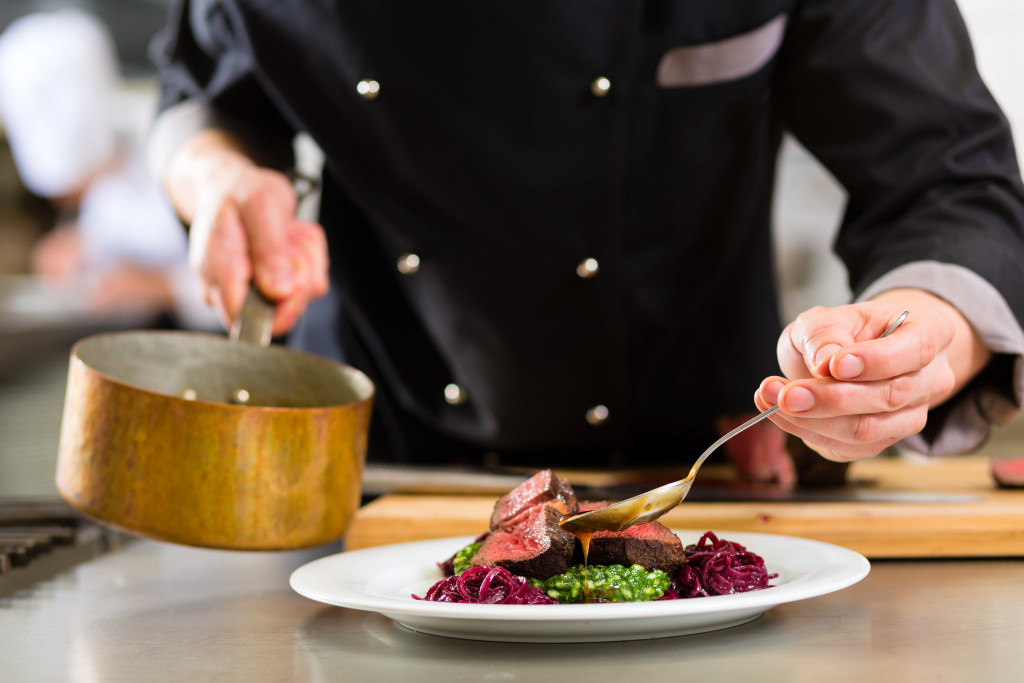- Research current market trends to create a unique menu that resonates with customers.
- Find inspiration in culture and travel to add unique flavors to your dishes.
- Connect with local farmers and food producers to source the freshest ingredients.
- Experiment with daily specials to offer customers something new.
- Collect customer feedback to identify preferences and use them to improve the menu.
Starting a restaurant business is an exciting and challenging venture. With the market saturated with various dining options, a unique and creative approach is crucial. The restaurant concept should incorporate beautiful food presentation, smell, and taste that will leave a lasting impression on customers. Finding food inspiration is a vital starting point for creating menus to set your restaurant apart. This blog post will take a deep look into tips for finding food inspiration and building a successful restaurant business.
1. Research the market trends.
The first step is to research current market trends. Check out the latest food magazines and restaurant reviews in local papers, watch cooking channels, and browse social media platforms like Instagram. Observe what type of food attracts views and likes from followers. This lets you know what is popular and create menus that resonate with the audience.
You should also review the menu of other restaurants. Take note of dishes that are popular and how they’re presented. Get inspiration from these ideas to create your own versions. If you can’t find inspiration from other restaurants, consider adding something unique to your menu that nobody else is doing.

2. Look for inspiration in culture and travel.
Culture and travel are significant sources of food inspiration. People associate food with cultural experiences and memories, and tasting different flavors worldwide creates a unique culinary experience. Finding inspiration from different cultures and infusing their flavors into your dishes can create a unique and memorable experience for your customers.
Try to visit different countries to experience their cuisine and explore foreign markets to find rare ingredients. This will give you an idea of the type of food and flavors that can be used to create a unique menu.
3. Connect with local farmers and food producers.
Supporting local farmers and food producers is crucial for creating authentic menus and maintaining solid relationships with the community. Farmers’ markets are excellent sources of fresh produce, and the connections made with farmers provide an excellent source of food inspiration. Visit these farmers to ask about their products and any seasonal goods that could become the highlight of your menu.
You should also look at bulk suppliers in your country to find unique ingredients. For example, if you are in the Philippines, many local suppliers offer high-quality products to incorporate into your menu. Most restaurants need canola oil for frying and roasting dishes, so you should look for a bulk supplier of canola oil in the Philippines who can provide you with the right amount of oil at an affordable price.
4. Experiment with daily specials.
Creating a balance between keeping popular items on the menu and experimenting with daily specials is crucial. Daily specials allow customers to try new dishes and expand the menu’s selection. Experimenting with various ingredients allows you to see how customers respond, letting you learn valuable lessons and improve current recipes. Here are some tips for creating successful daily specials:
a. Make sure the ingredients are readily available.
Most people like trying new dishes but don’t want to wait too long for them. So choose ingredients readily available in your local area and easy to work with.

b. Offer a variety of dishes from different cuisines.
Create a menu that offers something for everyone, like various Asian and Mediterranean dishes. This way, you can cater to different palates and create an interesting atmosphere.
c. Don’t be afraid to try something new.
Creativity is key when creating new dishes, so don’t be afraid to try something different. If you’re feeling adventurous, add a twist to popular dishes by adding unique flavors or combining different ingredients.
d. Make sure the presentation is beautiful.
Food presentation can be just as important as taste, so make sure your dishes are presented beautifully. Try incorporating colors and different textures to make the dishes look more appetizing.
5. Listen to your customers.
Customer feedback is critical as it provides valuable insights into what works and what can be improved. Encourage feedback to identify customer preferences and incorporate them into the menu. The goal is to balance customer feedback and a unique menu that sets your restaurant apart. You should also consider asking customers for suggestions to get ideas for new dishes.
Following the tips outlined in this blog post, you can create a unique restaurant concept and menu that will set your business apart from competitors. Researching current market trends, looking for inspiration in culture and travel, connecting with local farmers and food producers, experimenting with daily specials, and listening to customer feedback are all essential to building a successful restaurant business. With creative menus crafted through these methods combined with excellent service quality and atmosphere, customers will come flocking back repeatedly!


